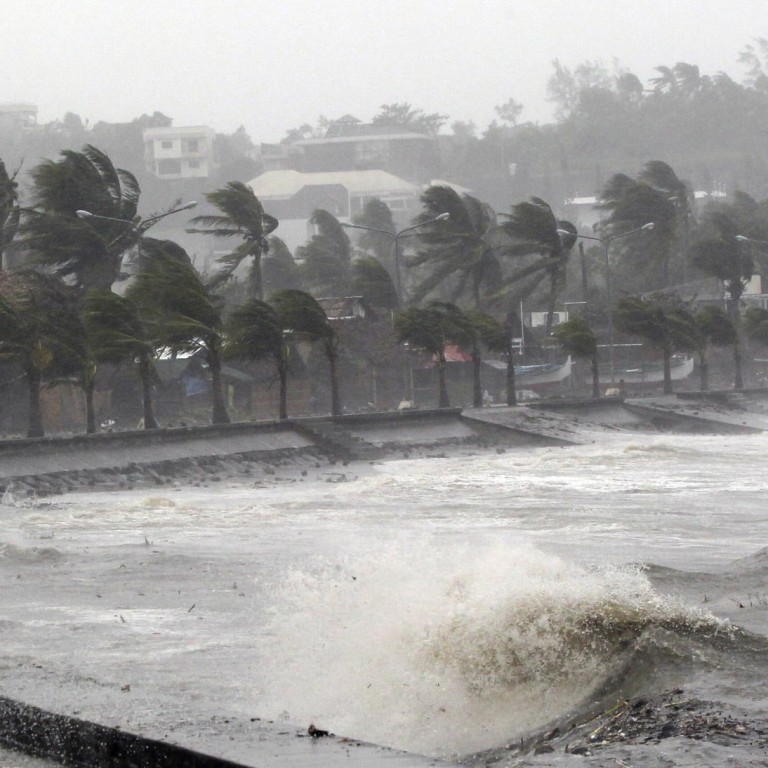
Three killed, 900,000 flee as Typhoon Hagupit lashes the Philippines
Typhoon Hagupit killed at least three people, knocked out power, mowed down trees and damaged thousands of homes as more than 900,000 people hid in shelters during a terrifying night.
Typhoon Hagupit killed at least three people, knocked out power, mowed down trees and damaged thousands of homes as more than 900,000 people hid in shelters during a terrifying night in which the central Philippines was battered at times by 210 kilometre an hour winds.
The typhoon destroyed flimsy houses, tore roofs off others, knocked down power poles and smashed bridges before it weakened yesterday, sparing the central Philippines the type of devastation that a huge storm brought to the region last year.
Haiyan's monster winds and tsunami-like storm surges a year ago claimed more than 7,350 lives, and left more than one million people in need of new and safe homes.
Watch: Typhoon Hagupit hits coastal communities in eastern Philippines
Hagupit slammed into Eastern Samar and other island provinces.
At least two people, including a baby girl, died of hypothermia in central Iloilo province and one person died after being hit by a falling tree in the eastern town of Dolores.
Hagupit was packing maximum sustained winds of 140 kilometres per hour yesterday, considerably weaker from its peak power but still a potentially deadly storm, according to forecasters. The typhoon was moving slowly, dumping heavy rain that could possibly trigger landslides and flash floods.
Traumatised by Typhoon Haiyan, more than 900,000 people fled to about 1,000 emergency shelters and safer ground.
The government, backed by the 120,000-strong military, had launched massive preparations to attain a zero-casualty target.
"There is a collective sigh of relief," Jerry Yaokasin, vice mayor of Tacloban, a city of 220,000 people that was one of the worst-hit last year, said.
Rhea Estuna, a 29-year-old mother of one, fled to an evacuation centre in Tacloban and waited in fear as Hagupit's wind and rain lashed the school where she and her family sought refuge.
When she peered outside yesterday, she said she saw a starkly different aftermath than the one she witnessed after Haiyan. "There were no bodies scattered on the road, no big mounds of debris," Estuna said. "Thanks to God this typhoon wasn't as violent."
Welfare Secretary Dinky Soliman said "Haiyan was the best teacher of all. People did not need much convincing to move to safety. In fact, many of them volunteered to go."
Displaced villagers were asked to return home from emergency shelters in provinces where the danger posed by the typhoon had waned, including Albay, where more than half a million people were advised to leave evacuation sites.
Officials were quick to warn that Hagupit was still on course to barrel across three major central islands before starting to move away tomorrow.
